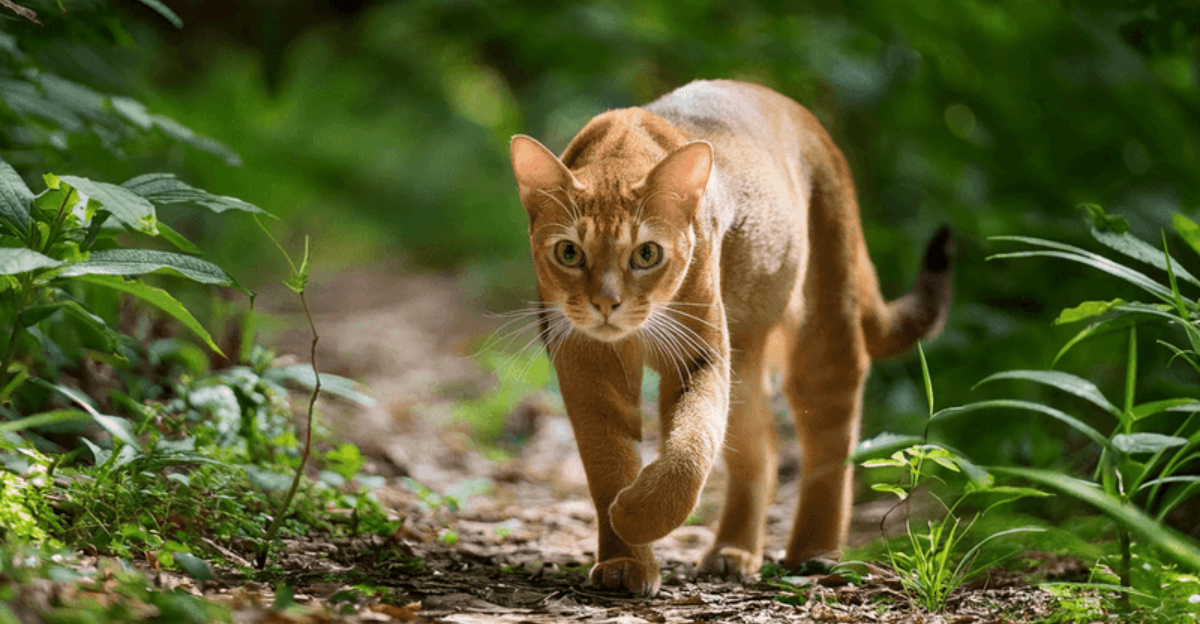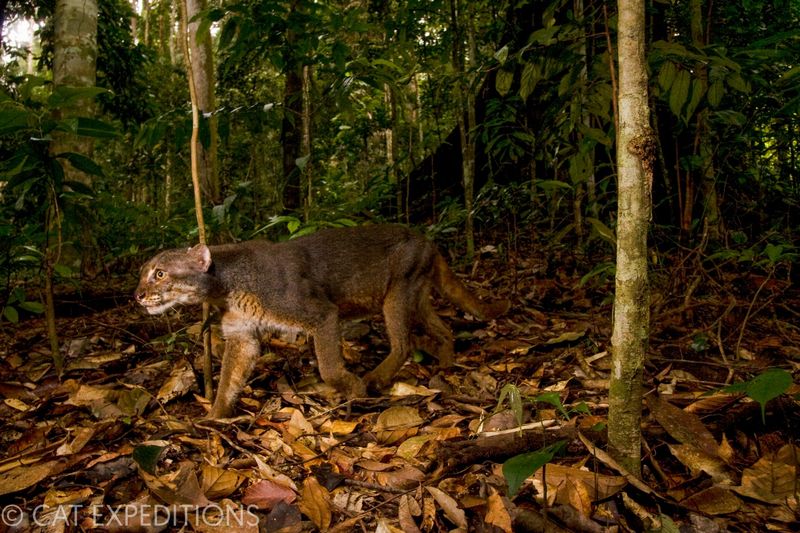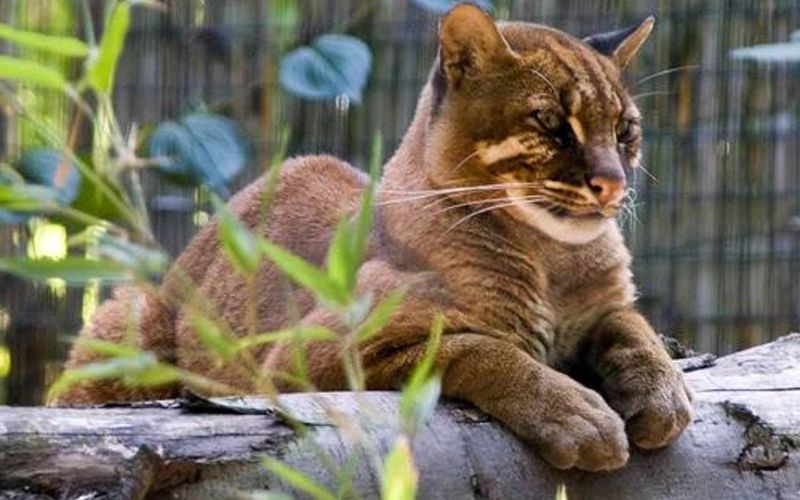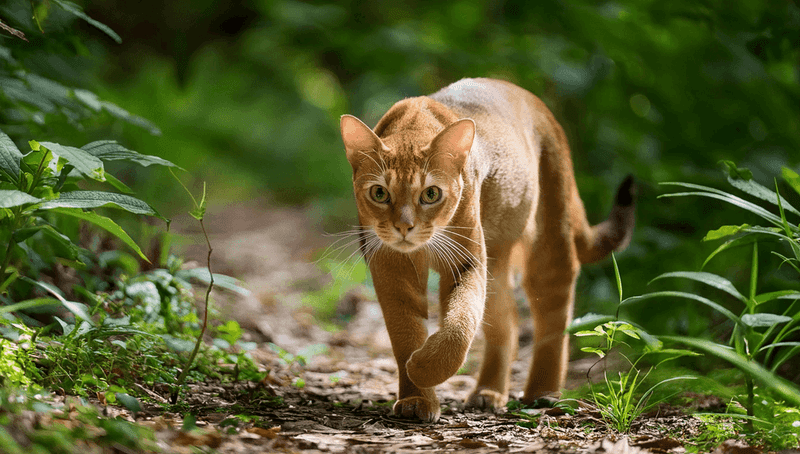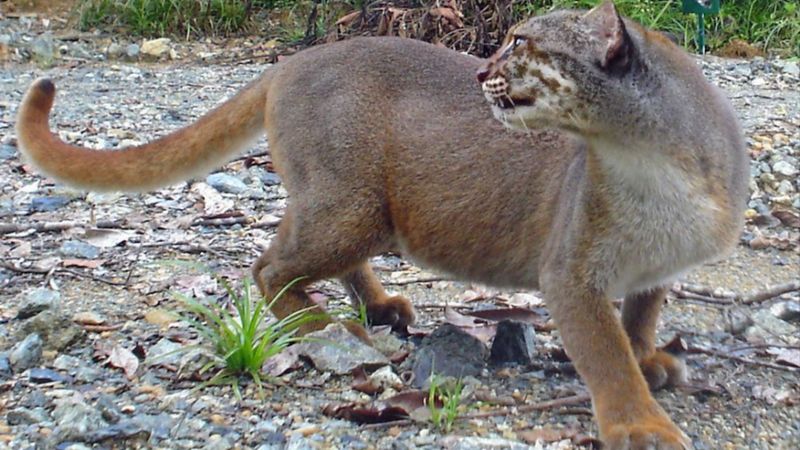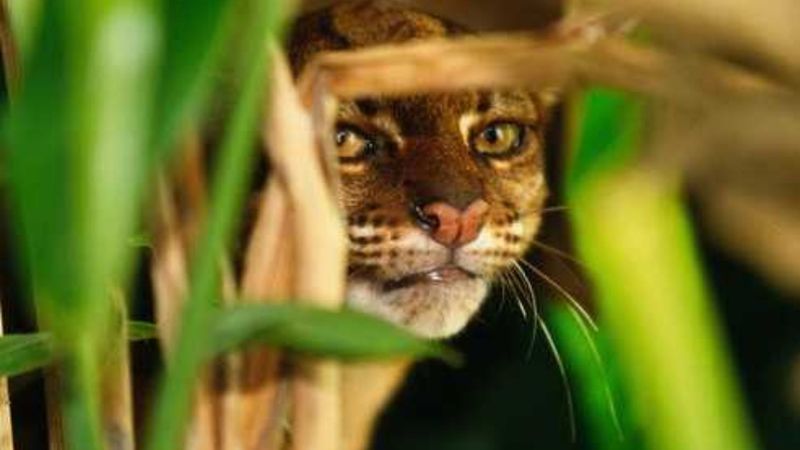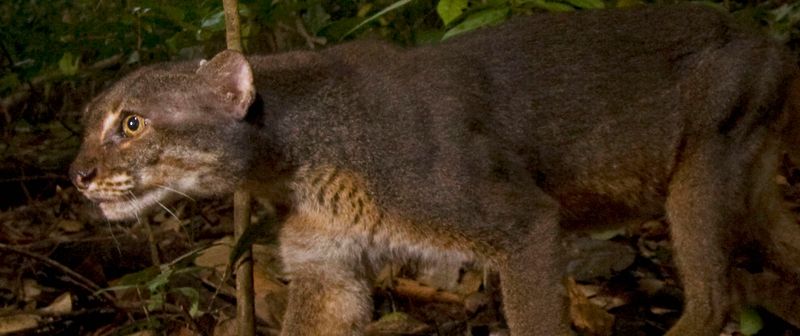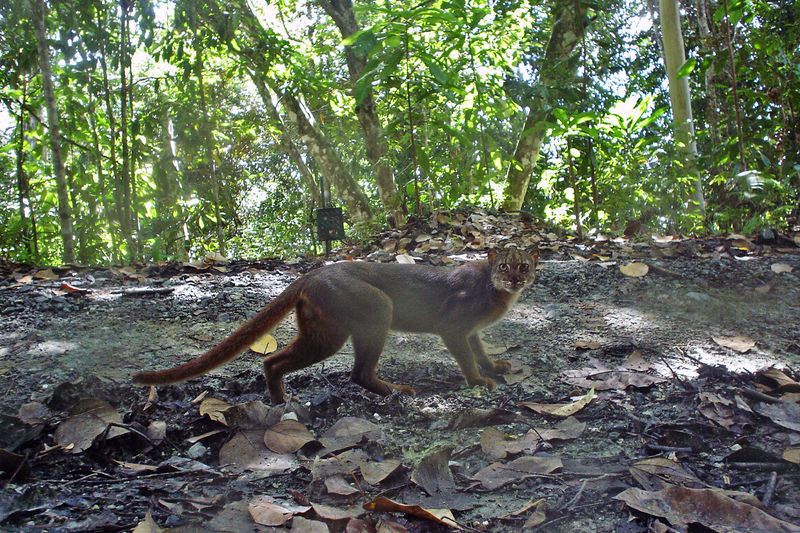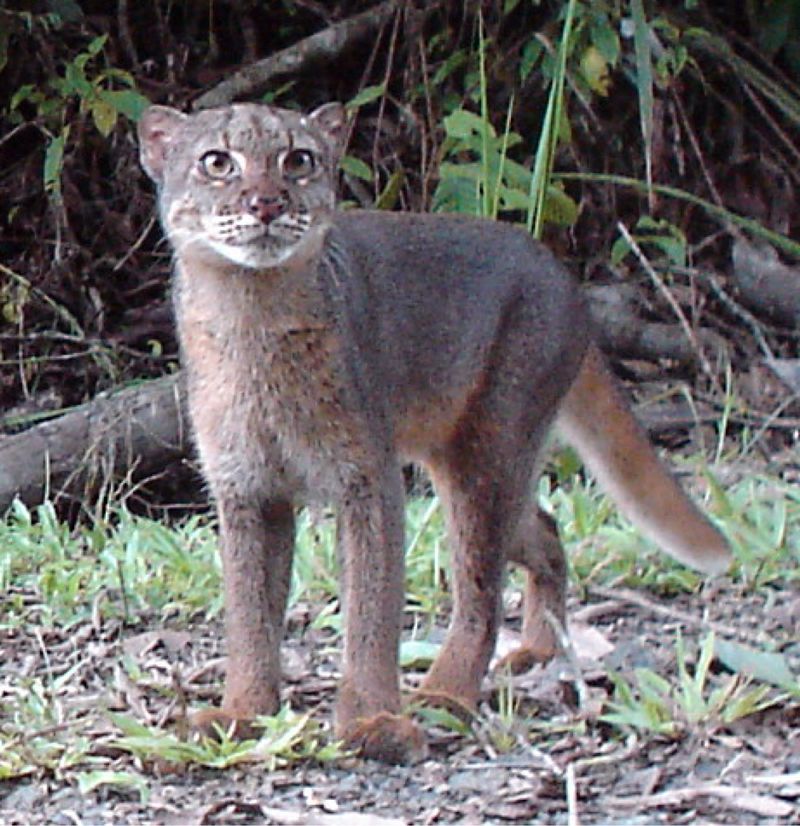📖 Table of Content:
- 1. A Living Ghost in the Rainforest
- 2. Island-Bound Evolutionary Marvel
- 3. Rusty Coat and Striking Features
- 4. Lifestyle Shrouded in Secrecy
- 5. Habitat Specialists Under Threat
- 6. Critically Endangered Status
- 7. Scientific Detective Work
- 8. Cultural Significance Among Indigenous Communities
- 9. Conservation Heroes Fighting for Survival
- 10. Hope for the Future Through Technology
Deep in the dense rainforests of Borneo lurks one of the world’s most mysterious wild cats. The Bornean Bay Cat remains so elusive that even veteran wildlife researchers rarely encounter it in the wild. First described scientifically in 1874, this small rusty-red feline continues to baffle scientists with its secretive lifestyle and rare appearances. Join us as we explore the fascinating world of this phantom cat that few humans have ever laid eyes on.
1. A Living Ghost in the Rainforest
The Bornean Bay Cat holds the title of one of the least-photographed wild cats on Earth. Scientists estimate fewer than 2,500 adult bay cats remain in the wild, yet the actual number could be much lower since population assessments prove nearly impossible.
Most wildlife researchers spend their entire careers without glimpsing this phantom feline. The first living specimen wasn’t documented until 1992, and the first clear photographs in the wild weren’t captured until 2003. Even camera traps, which successfully record other shy forest creatures, rarely catch this master of stealth.
2. Island-Bound Evolutionary Marvel
Evolution has crafted the Bornean Bay Cat into a true island specialist. Unlike many wild cats that roam across continents, this feline exists nowhere else on Earth except Borneo, making it a remarkable endemic species.
Scientists believe the bay cat’s ancestors arrived on Borneo during prehistoric times when land bridges connected the island to mainland Asia. When rising sea levels isolated Borneo approximately 12,000 years ago, these cats evolved independently, developing unique traits perfectly suited to the island’s rainforest environment.
3. Rusty Coat and Striking Features
Sporting a distinctive rusty-red or chestnut coat, the Bornean Bay Cat immediately stands out from other wild felines. Its medium-sized body typically measures 20-28 inches in length, with a long tail adding another 11-16 inches.
The cat’s face displays unique white lines running from the inner corners of its eyes, creating a striking contrast against its reddish fur. Some individuals showcase a more grayish coat variation. Both color morphs feature the cat’s signature rounded ears and a tail with a dark tip and distinctive black rings near the end.
4. Lifestyle Shrouded in Secrecy
The daily life of the Bornean Bay Cat remains largely a mystery to science. Researchers believe these cats are primarily nocturnal, explaining their limited daytime sightings. Their diet likely consists of small mammals, birds, reptiles, and fish—though no one has observed their hunting behavior in the wild.
Breeding habits remain equally enigmatic. Scientists know virtually nothing about their mating rituals, gestation period, or typical litter size. This information gap represents one of zoology’s most significant knowledge voids regarding wild cat species, making the bay cat a true biological enigma.
5. Habitat Specialists Under Threat
Unlike many adaptable wild cats, the Bornean Bay Cat appears highly specialized to specific forest habitats. Camera trap studies suggest these cats prefer undisturbed lowland forests, wetland areas, and highland forests above 800 meters.
Their specialized nature makes them particularly vulnerable to habitat destruction. Borneo has lost over 40% of its forests in recent decades due to logging, palm oil plantations, and mining operations. The cat’s apparent inability to adapt to disturbed habitats means each acre of rainforest lost likely translates to fewer bay cats surviving in the wild.
6. Critically Endangered Status
The International Union for Conservation of Nature (IUCN) classifies the Bornean Bay Cat as Endangered. Population estimates suggest fewer than 2,500 mature individuals remain, with numbers continuing to decline as forest destruction accelerates across Borneo.
The cat faces multiple threats beyond habitat loss. Hunters sometimes kill these rare felines accidentally when setting snares for other animals. Local superstitions in some areas lead to deliberate hunting, as parts of the cat are believed to have medicinal properties. Climate change adds another layer of uncertainty to their future survival prospects.
7. Scientific Detective Work
Studying the Bornean Bay Cat requires extraordinary patience and innovative research methods. Scientists deploy hundreds of camera traps throughout the rainforest, often waiting years before capturing a single image of these phantom cats.
DNA analysis from scat samples provides crucial information without requiring direct observation. Recent environmental DNA (eDNA) techniques allow researchers to detect bay cat presence from water, soil, or air samples containing microscopic biological traces. Satellite tracking of forest cover helps identify potential bay cat habitats for focused conservation efforts.
8. Cultural Significance Among Indigenous Communities
Several indigenous tribes across Borneo hold the bay cat in high cultural regard. The Dayak people traditionally believe these cats possess supernatural abilities, including the power to navigate between the physical and spirit worlds.
In some communities, spotting a bay cat is considered an extraordinary omen requiring spiritual interpretation. Traditional ecological knowledge from these communities provides valuable insights for conservation efforts. Indigenous tracking skills have occasionally helped researchers locate areas where bay cats might be present, creating important bridges between scientific and traditional knowledge systems.
9. Conservation Heroes Fighting for Survival
A dedicated network of conservationists works tirelessly to protect the Bornean Bay Cat. Organizations like the Bornean Wild Cat Action Plan bring together researchers, government agencies, and local communities to implement protection strategies.
Conservation initiatives include establishing protected forest corridors connecting fragmented habitats. Community-based monitoring programs train local residents to report bay cat sightings and illegal hunting activities. Education campaigns highlight the cat’s ecological importance and extreme rarity to build public support for conservation.
10. Hope for the Future Through Technology
Advanced technologies offer new hope for bay cat conservation. Satellite monitoring systems now track forest loss in real-time, allowing rapid intervention against illegal logging in protected areas. Thermal imaging drones can potentially detect bay cats in dense forest canopies where traditional methods fail.
Genetic banking initiatives preserve bay cat DNA for potential future restoration efforts. Conservation breeding programs remain challenging due to the lack of captive individuals, but could become crucial if wild populations continue declining. Artificial intelligence helps analyze thousands of camera trap images efficiently, identifying the rare bay cat appearances that human reviewers might miss.
